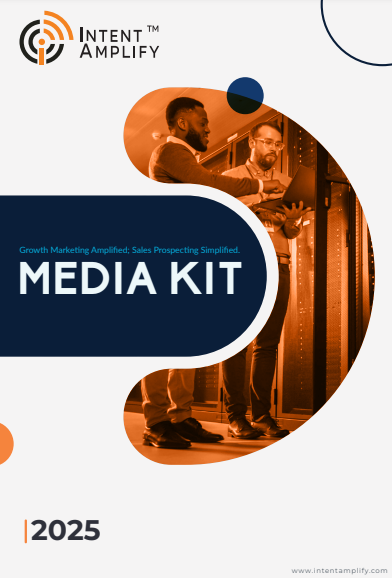
Product Experience Redefining in 2025: What B2B Marketers Must Know to Win Loyalty and Growth
- Last updated on: November 23, 2022
In 2025, product experience (PX) is now a core growth engine, especially in the world of B2B SaaS and technology marketing. With decision-makers expecting more intuitive, personalized, and self-directed journeys, product experience has become a powerful way to differentiate, build loyalty, and boost customer lifetime value.
Modern B2B buyers don’t wait for a sales pitch; they try, explore, and evaluate products on their own terms. If your product doesn’t guide them to value quickly, you risk losing them to a competitor that does. That’s why today’s marketing leaders are investing in product-led strategies, in-app education, and real-time feedback loops to enhance the user journey from the very first login.
As product-led growth (PLG) models continue to gain ground, marketers now play a vital role in shaping how users experience the product and how those experiences translate into adoption, expansion, and advocacy.
Why Product Experience Is Now a Revenue Driver in B2B
The traditional handoff from marketing to sales to customer success is evolving. Today’s B2B buyers want seamless, value-driven interactions with your product from day one, and they expect consistency at every step. That’s where product experience comes in.
According to a 2025 report by ProductLed.com, companies that invest heavily in product experience see a 30% higher customer retention rate and generate over 2x more expansion revenue compared to their peers. Why? Because great PX helps users understand the value of the product faster, reduces churn, and increases the likelihood of upsells or renewals.
We’re also seeing a major shift toward self-service journeys. Gartner predicts that 61% of B2B buyers now prefer to evaluate products independently, without interacting with a sales rep until much later in the process. In this new landscape, your product becomes the primary marketing and sales channel, and every interaction within it matters.
From a business perspective, this means PX is directly tied to critical metrics like net revenue retention (NRR), time-to-value (TTV), and product-qualified leads (PQLs). Whether you’re in fintech, martech, or cybersecurity, enhancing your product experience isn’t just a UX task; it’s a growth strategy.
Key Pillars of a Great B2B Product Experience
Creating a strong product experience is about more than just design or onboarding. It’s about delivering real value at every stage of the user journey from first interaction to long-term retention. In 2025, the best-performing B2B companies are building PX around five key pillars:
1. Frictionless Onboarding and Quick Time-to-Value
Your onboarding experience sets the tone for everything that follows. If users struggle to understand how your product works or why it matters, they won’t stick around. The goal is to reduce the time between sign-up and the “aha” moment when the user first experiences real value.
Research by Wyzowl (2020) shows that companies with a streamlined onboarding process see a 63% higher rate of conversion to paid customers. Whether through interactive walkthroughs, video guides, or live chat support, getting users to value faster pays off.
2. In-Product Education That Guides and Grows
The days of handing users a PDF manual are over. Today’s users expect real-time, in-product help. Tooltips, pop-ups, contextual guides, and modular walkthroughs are now standard for B2B products.
Platforms like Appcues, Pendo, and Userpilot allow marketers and product teams to build smart onboarding flows and behavior-triggered guidance that adjust based on user role or use case, no code required.
3. Feedback Loops that Inform and Improve
A strong PX strategy includes constant listening. Ask for feedback in the flow of work right after users complete a key task, try a new feature, or churn. Use short in-app surveys, NPS tools, and support conversations to uncover friction points.
But it’s not just about collecting feedback. You need to act on it. According to Mixpanel’s 2025 Product Benchmark Report, teams that close the loop on feedback within 30 days see a 25% improvement in feature adoption and stronger user trust over time.
4. Consistency Across Channels
Whether it’s a marketing email, product dashboard, help article, or customer success call, every touchpoint should speak the same language. B2B buyers are savvy, and any disconnect in tone, features, or expectations can erode trust.
That means aligning your product messaging, documentation, onboarding, and support content so users get a unified experience no matter where they engage.
5. Personalization Through Data and Behavior
AI and intent data are raising the bar for PX. By understanding what users care about based on their role, actions, or industry, you can deliver personalized content, features, or upsell nudges that feel relevant, not random.
Segment’s 2024 State of Personalization report found that 89% of B2B users expect a personalized experience based on their usage behavior. Whether it’s customizing onboarding flows or highlighting unused features, personalization increases perceived value and stickiness.
How Top Brands Are Investing in PX Today
Leading B2B companies aren’t treating product experience as an afterthought; they’re building growth strategies around it.
Slack, for example, built its onboarding around one goal: helping teams send their first message quickly. This reduced their time-to-value and fueled viral growth. Slack’s product walks users through setup with simple, in-app guidance that feels natural, not forced.
Notion has turned in-product education into an art. With pre-built templates, contextual help, and feature showcases, it empowers users to explore and customize, boosting engagement and retention.
ClickUp uses real-time feedback and usage tracking to personalize the dashboard experience for different roles (e.g., marketing vs. engineering), making the tool more relevant from day one.
These companies use platforms like Pendo, Appcues, and Gainsight PX to monitor engagement, push contextual help, and adapt their product experience dynamically.
They prove that when you invest in PX, you don’t just retain users, you turn them into advocates.
How to Measure Product Experience Success in 2025
Measuring PX in 2025 means focusing on how quickly users find value, how deeply they engage, and whether their behavior leads to retention and revenue.
Time-to-Value (TTV)
Tracks how fast a new user reaches their first “aha” moment. A shorter TTV boosts activation by up to 35% (Pendo, 2025).
→ Tools: Pendo, Appcues
Product Adoption
Looks at how often and how deeply users engage with key features. More adoption = higher stickiness.
→ Tools: Mixpanel, Amplitude
Daily/Weekly Active Usage
Frequent use signals recurring value. Aim for a WAU/MAU ratio of 40–60% for B2B tools.
→ Track: Logins, task completions
Net Promoter Score (NPS)
Measures loyalty and trust. Pair with open feedback to catch usability issues early.
→ Tools: Delighted, Qualtrics
Product-Qualified Leads (PQLs)
Identifies sales-ready users based on behavior like feature usage or repeat logins.
→ Tools: Clearbit, MadKudu
Net Revenue Retention (NRR)
High NRR (120%+) shows users are staying, expanding, and upgrading, a key growth signal in PLG.
→ Track: Churn vs. expansion revenue
Make Product Experience a Company-Wide Priority
Great product experience isn’t just a marketing or product function; it’s a company-wide responsibility. Everyone from customer success to engineering should understand how their work impacts user satisfaction and retention. When teams align around the same PX goals, it becomes easier to deliver consistent messaging, remove friction, and prioritize the right product improvements.
Internal education matters too. Before pushing new features live, ensure your team knows how they work, who they’re for, and how they add value. If your internal teams aren’t confident using the product, your customers won’t be either.
Embedding PX into your company culture means making every decision from roadmap planning to support scripts with the end user in mind. That’s what separates good B2B brands from great ones.
In 2025, B2B companies can’t afford to overlook product experience. It’s the key to faster adoption, stronger retention, and long-term growth, especially in product-led models where the product does most of the selling. When you invest in PX across the full lifecycle, you don’t just keep users; you turn them into champions.
FAQs: Product Experience in B2B Marketing
- What is product experience in B2B?
Product experience (PX) refers to how users interact with your product from onboarding to daily use to renewal. It directly influences satisfaction, loyalty, and customer lifetime value. - Why is product experience so important in 2025?
Buyers expect self-serve journeys and fast value. A strong PX reduces churn, accelerates growth, and supports product-led strategies where the product drives revenue. - How does PX relate to marketing?
Marketing owns messaging, in-product education, and customer insights. PX connects marketing efforts to real user outcomes, from activation to upsells. - What’s the difference between UX and PX?
UX focuses on usability and interface design. PX is broader, covering the entire experience across onboarding, usage, support, and feedback. - How can smaller companies improve PX with limited resources?
Start simple: streamline onboarding, gather user feedback, and offer helpful in-app guidance. Tools like Appcues, Userpilot, or Hotjar make it affordable to improve the experience step by step.



